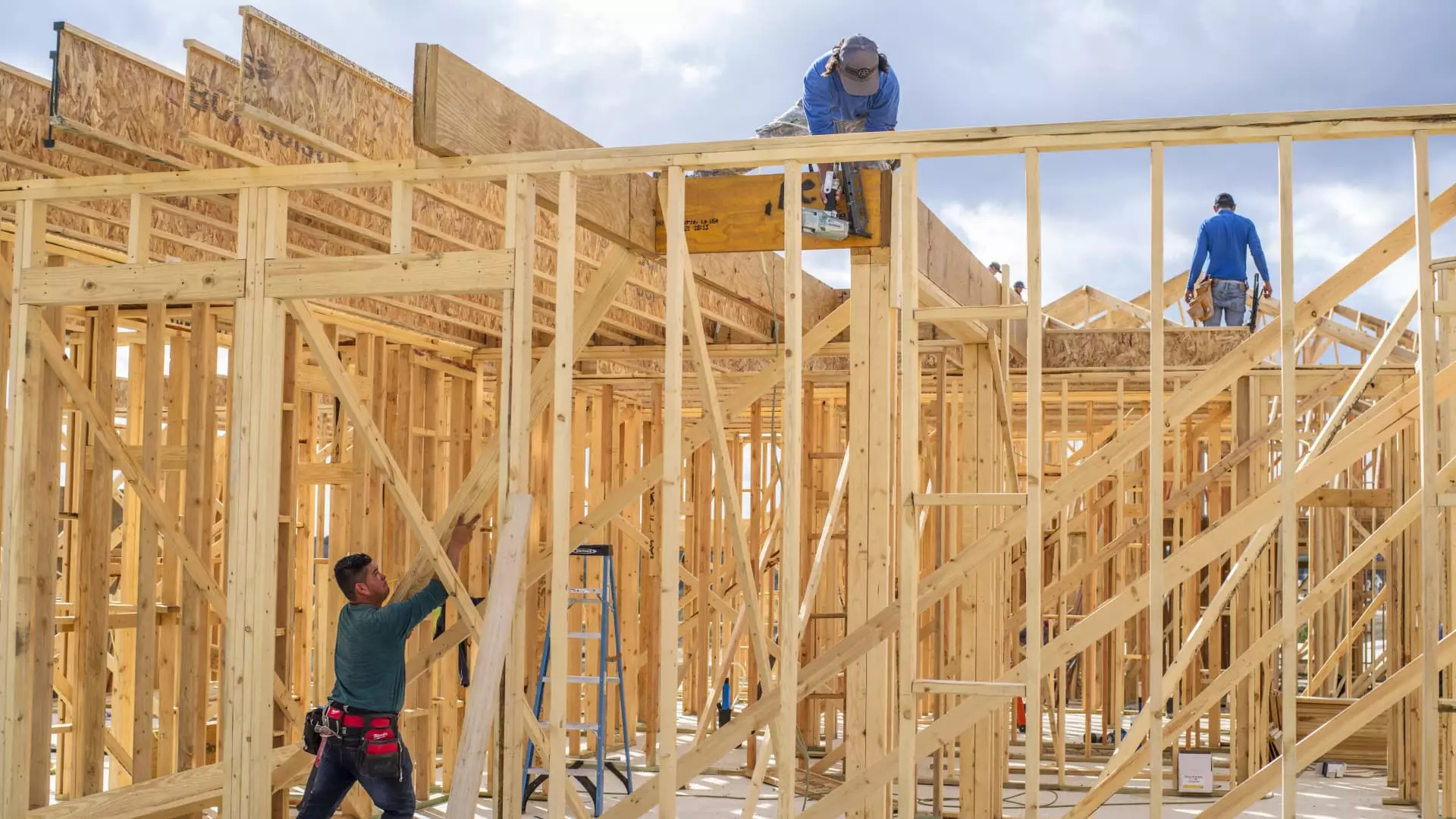The housing industry in the United States is currently facing a multifaceted crisis, primarily fueled by increasing costs associated with tariffs and rising mortgage rates. The National Association of Home Builders (NAHB) recently released data indicating that sentiment among single-family homebuilders has plummeted to its lowest level in five months. This dip in sentiment has wide-ranging implications for the housing market and the broader economy, signaling that builders are grappling with significant challenges.
According to the NAHB Housing Market Index (HMI), builder sentiment has decreased sharply by five points, landing at a reading of 42. A figure below 50 is traditionally interpreted as negative sentiment, which indicates a bearish outlook amongst developers. In comparison, the index was at a more optimistic 48 during the same period last year. This decline is primarily attributed to uncertainties regarding tariffs. Home builders are anxious about the potential for increased costs, particularly as President Donald Trump’s proposed tariffs on materials from Canada and Mexico raise alarm bells across the industry.
The implications of this shift in sentiment are striking. As Carl Harris, the NAHB Chairman, pointed out, builders are hoping for favorable policy changes, particularly concerning regulatory reform. Yet, the looming policy uncertainties and financial challenges have necessitated a reevaluation of expectations for the near future, particularly for 2025.
Examining the components of the HMI provides deeper insights into the issues facing the housing market. Current sales conditions fell by four points to a reading of 46, while buyer traffic and future sales expectations took even steeper dives. The latter component, which fell a shocking 13 points to 46, indicates dwindling optimism for sales in the upcoming months, reaching its lowest point since December 2023.
This negative outlook arises at a particularly critical juncture as the spring market approaches. Historically, spring is the peak season for home buying; however, the recent declines in builder sentiment signify potential challenges ahead in terms of supply. The rising interest rates on mortgages, currently over 7% for the 30-year fixed-rate loans, exacerbate affordability issues for potential buyers. This is further complicated by increasing home prices compared to the previous year.
The Impact of Tariffs on Costs
The complexities of international trade and tariffs cannot be understated, as the NAHB highlights that a significant portion of the necessary materials for homebuilding comes from abroad. Specifically, 32% of appliances and 30% of softwood lumber are imported. The uncertainty stemming from tariffs leads to heightened anxiety for builders about escalating costs, which may influence their decisions to proceed with new projects.
With rising material costs, builders may resort to passing these expenses onto consumers, thereby making homes even less affordable. Consequently, this creates a vicious cycle where potential buyers are unable to enter the market due to crippling costs, which leads to insufficient demand for new homes.
Industry experts have noted a concerning trend in buyer demand. Many builders have reported a palpable pullback in the willingness of buyers to make commitments, a trend evident in various earnings reports from major firms. Ryan Marshall, CEO of PulteGroup, highlighted that despite the Federal Reserve’s attempts to lower short-term rates, elevated mortgage rates have continued to pose affordability challenges for homebuyers.
In February, the percentage of builders lowering prices fell to its lowest since May 2024, indicating a potential shift in market dynamics. While sales incentives have traditionally been employed to stimulate buyer interest, their effectiveness may be waning. When higher prices and interest rates price buyers out of the market entirely, even substantial incentives may fail to attract potential homebuyers.
Looking forward, the landscape for single-family homebuilders appears increasingly uncertain. The convergence of high mortgage rates, elevated home prices, and tariff-induced cost increases presents a formidable challenge. As builders recalibrate their strategies in response to these factors, it is essential to monitor how these dynamics will shape the future of the housing market. If conditions do not improve, the systemic challenges facing the homebuilding sector could result in a slowdown of new constructions and diminishing opportunities for potential homeowners.

Leave a Reply